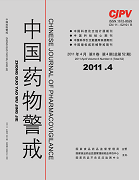|
|
Determination of the Contents of 2,3,5,4' -tetrahydroxystilbene 2-O-β-D-Glucopyranoside,Emodi and Physcion in Yangxue Shengfa Capsules by HPLC
ZHENG Li-na, REN Hai-yong, ZHANG Zuo-ping, SUN Rong
2011, 8(4):
199-201.
Objective To develop an HPLC method for determination of 2,3,5,4'-tetrahydroxystilbene 2-O-β-D-Glucopyranoside, emodin and physcion in Yangxue Shengfa Capsules, to explore the relationship of toxicity of Yangxue Shengfa Capsules and Radix Polygoni multiflori from the perspective of index constituents, and to provide evidence for the quality reseach of Yangxue Shengfa Capsules. Methodse HPLC, Hypersil C18 column(4.6mm× 250mm, 5μm)was adopted; The solvent system consisting of acetonitrile-water(19:81) was used in the determination of 2,3,5,4'-tetrahydroxystilbene 2-O-β-D-Glucopyranoside,and the detection wavelength was at 320nm. The solvent system consisting of methanol-0.1% phosphoric acid(80:20)was used in the determination of emodin and physcion, and the detection wavelength was at 254nm. Results The linear ranges of 2,3,5,4'-tetrahydroxystilbene 2-O-β-D-Glucopyranoside, emodin and physcion were 0.005~0.5mg/mL, 0.00168~0.084mg/mL, and 0.00104~0.052 mg/mL,respec-Tively. The average recoveries were 98.67% (RSD=1.23%), 95.80% (RSD=1.63%), 97.70%(RSD=1.89%), respectively. Conclusion The Methodse are rapid, accurate, and with good linear relationship, good reproducibility, good stability, and high recovery, can be used for the determination of Yangxue Shengfa Capsules. It is initially confirmed that the toxicity of Yangxue Shengfa Capsules may be related with Radix Polygoni multiflori, and anthraquinone may be toxic components.
References |
Related Articles |
Metrics
|
